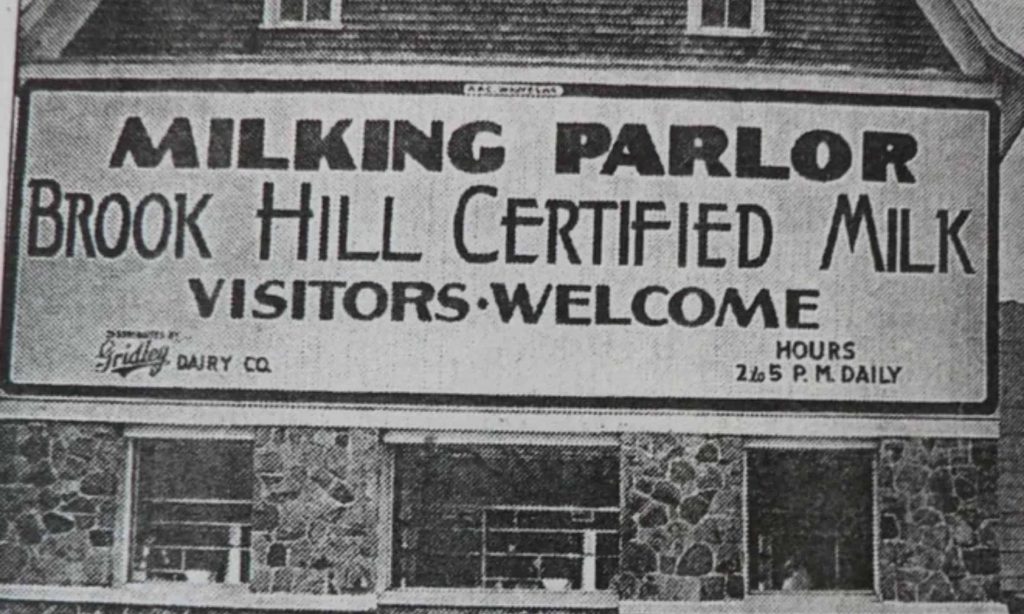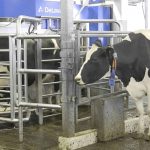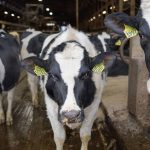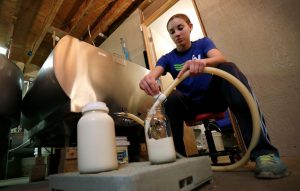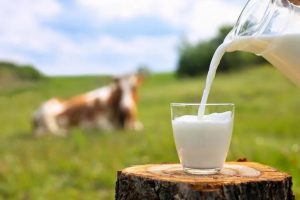
In the 1500’s Austrian officials were concerned that milk was a health issue and in 1824, one William Dewees recommended the application of heat to milk as a method of preservation. In 1853, Gail Borden was working on a patent to make milk safer and in 1856 Massachusetts was installing milk control programs and, of course, pasteurization became possible in the late 1800’s.
The controversy over pasteurization or no pasteurization was already an old one with the same arguments then as are being used at seemingly never-ending discussions on the subject.

Dean Henry 116 years ago
Here is a quote from a speech by the UW-Madison College of Agriculture, W.A. Henry, the first Dean of the College, on Sept. 25, 1907. It was made in praise of the Williams – Rowlands Co. who represented the Waukesha Guernsey Sanitary Milk & Cream Company.
““It is a fact beyond question that in the past much of the milk that has gone into consumption has been totally unfit for human food. Often it was dirty, and in some cases carried disease. Consumers are growing more careful, and the wise ones are are willing to pay a reasonable price for a clean, healthful article. Any effort of the producers in the direction of improvement should be met with hearty support from the consumers.”
Yes, commercial milk pasteurization was available in 1907 but barely and it was long before the day of electronic communication and publicity. The Waukesha Guernsey Sanitary Milk & Cream Company was formed to “furnish to patrons in Milwaukee milk and cream of the highest quality…and, the herds of this firm are under the oversight of skillful veterinary experts, strict tubercular tests and frequent examinations for other maladies incident to cows are applied.”
Those words came from a promotional piece written by the company that also contains these words “It is a demons ratable fact that pasteurization destroys the vitality of milk as well as the bacteria, a condition from which our products is warranted to be free.”
Rampant TB
A news report at the time stated, “Although the fact that milk could contain bacteria of many kinds (good and bad), tuberculosis ran rampant (43% of the deaths of Milwaukeans age 20 to 44 was from the disease, medical authorities said).”
While pasteurization was a solution of sorts, another certified raw milk came into being in the late 1800’s when Henry Coit, a medical doctor founded the Medical Milk Commission and the certified milk movement. Physicians in cities across the country worked together to certify dairies for the production of clean raw milk.

Doctors ran the program
In 1912, members of the American Association of Medical Milk Commissions adopted a booklet “Standards for the Production and Distribution of Certified Milk” listing 79 points to be followed by their producers. These included everything from locating the barn in a dry area, wearing clean overalls and caps, stanchions made of iron pipe or hardwood and that milkers shall not touch their nose or mouth or spit on the floor of the stable.
Interestingly, Waukesha county was a major center of Certified Milk in Wisconsin and the nation, probably because of the large number of progressive dairies and the proximity to the population of Milwaukee and Chicago.
Keystone Farms at Waukesha, owned by Owen W. Rowlands (son of H.O. Rowlands of the before mentioned Waukesha Guernsey Sanitary MIlk and Cream) began producing Certified Raw Milk in 1916.

The Keystone Farms Certified Raw Milk business grew and because of the demand they were soon joined by nearby Wern Farms (650 cows) and Brookhill Dairy (900 cows) who also had been milking cows for decades.
“We all were inspected by doctors representing the Milwaukee and Chicago Medical Milk Commissions,” Bob Rowlands says. “People wanted raw milk and we supplied it.”
Rowlands who had taken over Keystone Farm in 1954 upon the death of his father, said his milk was sold under the farm label, by a number of other dairy processors and later at a store on the farm along with their well known ice cream. “It was during the time of a “natural foods” movement and a lot of health stores wanted raw milk,” he said.
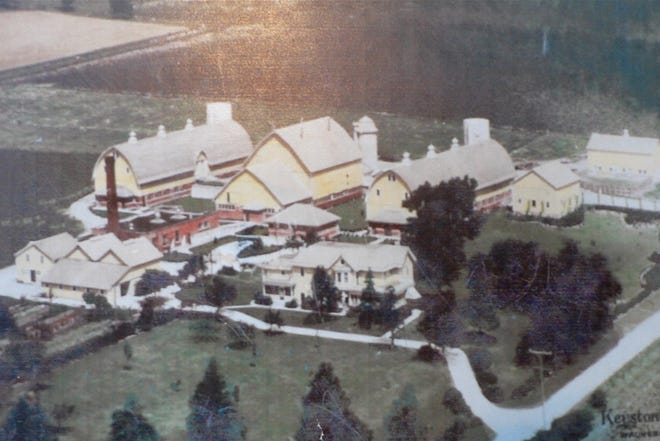
A Keystone Dairy advertising brochure of the time says that in Milwaukee, Certified milk was available door to door or in health food stores while in Chicago, a prescription was required with the first order.
It also says that the Keystone Certified Raw Milk was continually tested by four laboratories: Milwaukee Food Laboratory; Milwaukee Health Department; Chicago Metro Laboratory and the Chicago Health Department.
David Williams, remembers delivering Wern Farms Certified Raw Milk door to door as a youngster. “We had 47 truck routes and people really wanted our milk,” Williams said.

Rowlands admits that customers were also somewhat concerned by the potential health hazards of drinking raw milk and that those concerns along with several negative (but not factual) magazine articles and government restrictions caused Keystone to stop selling the Certified Raw Milk in 1969.
In 1971, the Keystone Farm was dispersed, and Bob Rowlands began a new life as a realtor. Brookhill Dairy had sold their dairy herd in 1958 and Wern Farms sold their milk bottling business in the late 1960’s, the herd was dispersed in 1971 and some of the land sold for development.
The largest dairy (8000 cows) in the nation that ever sold Certified Raw Milk was Alta Dena Dairy in California. It was founded in 1945 by the Stueve family and became a Certified Dairy in 1953. After decades of legal battles centering on the raw milk issue, the controversy ended in 1999 when company was sold to Dean Foods.

Raw milk, good or bad?
Over 100 years, anecdotal discussions and legal battles haven’t put the issue to rest.
Just about anyone raised on a dairy farm has grown up on raw milk and prior to the enactment of the pure milk rules in the 1960’s, a lot of that milk was of terrible quality. I remember banging the strainer against the top of the milk can to get the milk to flow. Frankly, I don’t know how we survived that terrible quality product.
However, we probably were immune to many things, including bad bacteria. If raw milk advocates didn’t grow up drinking raw milk, they probably don’t have that immunity. (Same for the common childhood diseases like mumps, measles and chicken pox that we all had as kids).
Wisconsin and other state’s raw milk battles will probably continue, not because of the rules and regulations, rather because of the often quoted right to make your own decision ‒ good or bad. Driving drunk is also illegal but lots of folks make the decision to do it, and as the figures show, sometimes (too often) kill themselves or others.
There will probably be continuing discussions on raw milk drinking and not everyone will be happy. I guess that’s life.
